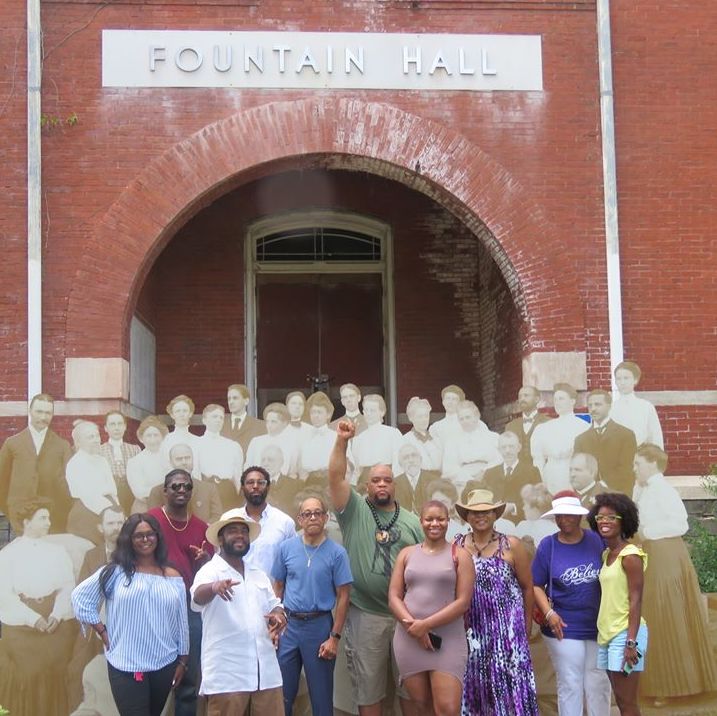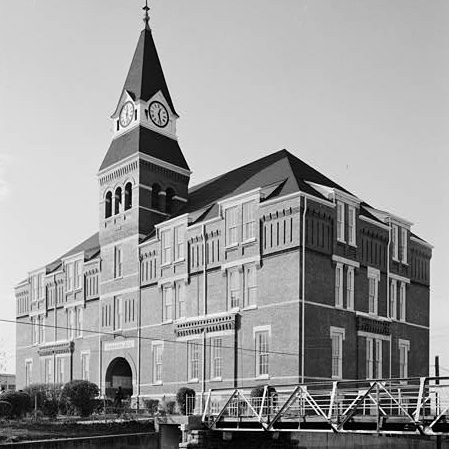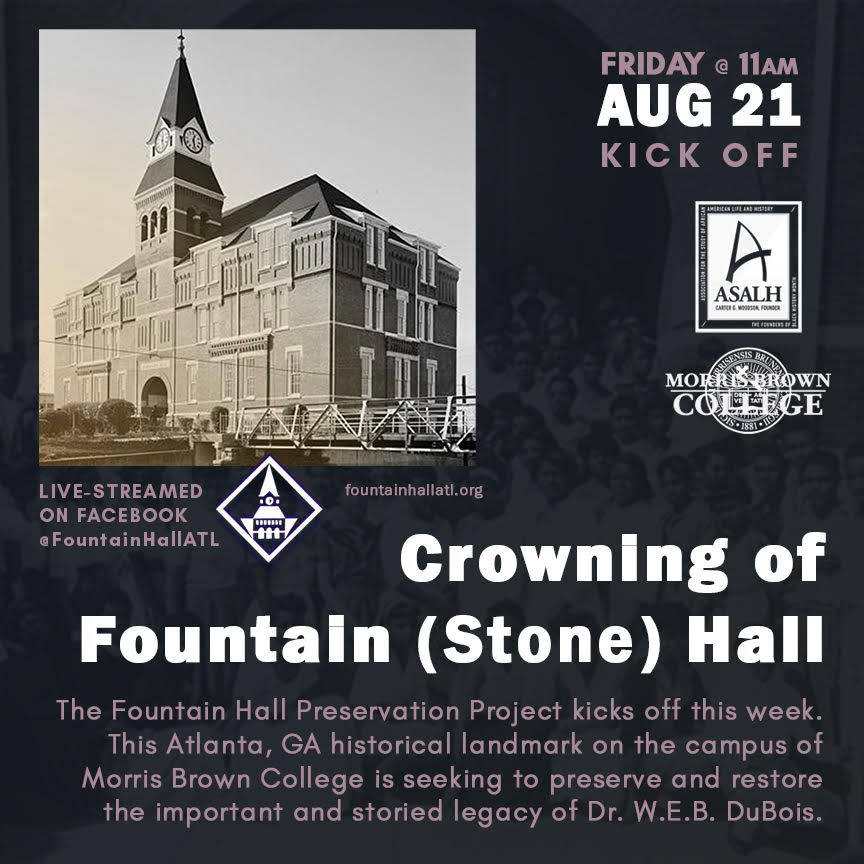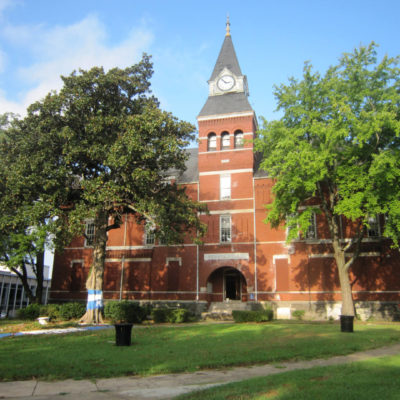Atlanta’s Historic
Fountain Hall
Erected in 1882 on the crest of Diamond Hill on the Morris Brown College campus, Fountain Hall is one of the earlier structures for the original site of Atlanta University.
Preserve the Legacy
Ensure that Fountain Hall is around for generations to come.
Provide the Resources
Raise funds and friends to assist in the restoration efforts.
Promote the Story
Spread the story of Fountain Hall’s rich legacy.
About Fountain (Stone) Hall
From its construction in 1882 until 1929, Fountain (Stone) Hall primarily functioned as the administration building for Atlanta University, though it contained a chapel, library, recitation rooms, and laboratories during various times in its history. It served in a similar capacity for Morris Brown College for many years. Currently, the structure contains offices, including that of renowned scholar Dr. W.E.B. Du Bois, a chapel, art studios, and a gallery.
The Legacy
Fountain (Stone) Hall has been a gathering place and focus of activity in the educational process of many of the mostly Black Americans attending Atlanta University and Morris Brown College since its construction. Because of the building’s location, Fountain Hall can be seen from some distance and has long served as an impressive and identifying landmark for the historic Atlanta University Center.
Fountain Hall in the News
Fountain (Stone) Hall Built
Designated a National Historic Landmark
Friends of Fountain Campaign Began
The Fountain Hall
Development Project
Fountain Hall, formerly Stone Hall and also Fairchild Hall, is a historic academic building built in 1882, on the campus of Morris Brown College. Fountain Hall is a contributing historic building listed in the National Register of Historic Places as a member of the Atlanta University Center Historic District. It is the oldest surviving building originally associated with the original Atlanta University, one of the first Historically Black Colleges (HBCU’s) in the American South. It was declared a National Historic Landmark in 1974. It is now named after Bishop William A. Fountain.
Atlanta University was founded in 1865 and opened in 1869 with leadership and financial support of a missionary society, to provide a high-quality advanced education to Southern African Americans Post Civil War. Stone Hall, the most prominent building on its campus, was built in 1882, and housed administrative offices and classrooms. The school produced many prominent African American leaders in business, education, and politics. Dr. William Edward Burghardt DuBois was the most distinguished member of the faculty. Stone Hall was leased to Morris Brown College in 1929, which renamed it first to Fairchild Hall, and later then to Fountain Hall. W.E.B. DuBois wrote many of his nationally renowned research studies, novels and books, academic journals, and civil and human rights advocacy articles while researching and teaching in Fountain Hall.
As a recognized National Treasure, the property is eligible for historic preservation incentives, such as non-profit gifts and grants, federal and state Historic Tax Credits, New Markets Tax Credits, Opportunity Zone Financing, Local Property Abatement, various local government incentives, and other individual or philanthropic gifts and donations. These gifts and grants can be made on this Fountain Hall website and are managed through a fiduciary 501(C)(3) nonprofit sponsor, which is the Atlanta Branch of The Association for the Study of African American Life and History (ASALH).
A preservation and rehabilitation Development Agreement exists between the Morris Brown College Board of Trustees and college administration, and the Fountain Hall Development Group, L.L.C., a nationally recognized team of historic preservation experts. These experts have experience in structuring deals involving Historic Tax Credits and syndication financing, Preservation Architectural and Engineering Services, Cultural and Art History, Architectural History, Preservation Strategy and Leadership, Project Management and Construction, Real Estate Development and Real Estate Finance, and the Historic Preservation Stabilization Process.
“Rehabilitation” is defined by the National Park Service, a division of the U.S. Department of the Interior as “the process of returning a property to a state of utility through repair or alteration, which makes possible an efficient contemporary use, while preserving those portions and features of the property which are significant to its historic, architectural, and cultural values”.
The project will adhere to the Secretary of the Interior Standards for the Treatment of Historic Properties and Rehabilitation which are common sense historic preservation principles in non-technical language. They promote historic preservation best practices that will help protect our nation’s irreplaceable cultural resources. The Secretary of the Interior and its preservation federal agency, The National Park Service, is responsible for establishing standards for all programs under Departmental authority, and for advising other Federal agencies on the preservation of properties listed in or eligible for listing in the National Register of Historic Places.
The project will provide improvements to the exterior and interior spaces of the building, with a goal to restore the grandeur of the building to its original design from 1882.
MAKE A DONATION NOW !
Contribute to the fundraiser to assist in the Fountain Hall restoration effort.
Media Gallery
Photos of Fountain Hall, past and present.
Contact us to submit your photos and videos.
Get the Latest
Sign up for our email list to receive updates











